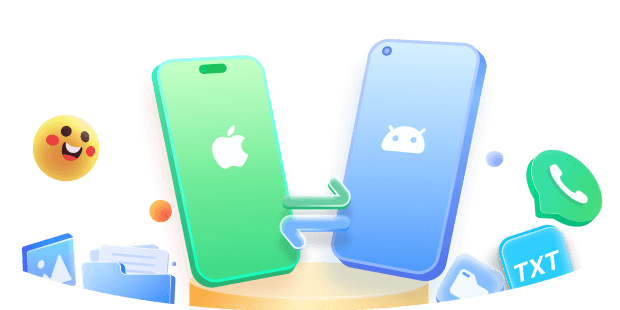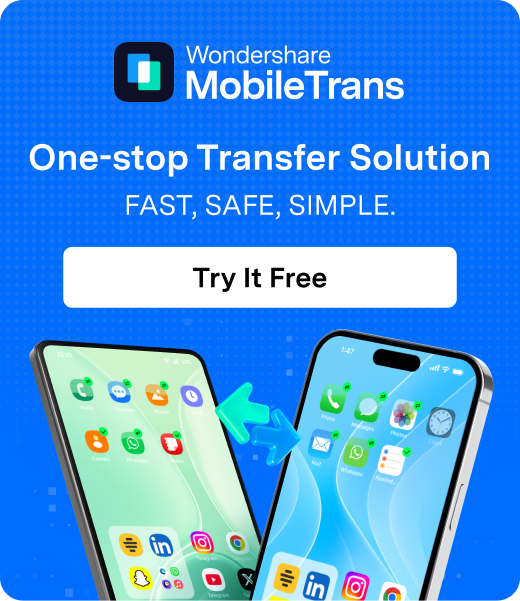Many consumers are asking an important question with global trade tensions rising: “Should I upgrade my iPhone before tariffs take effect?” It's a genuine concern, especially for users who’ve been waiting for the right moment to upgrade. When prices are expected to increase due to international tariffs, your decision becomes more urgent than ever.
Thus, this article is planned to help you make the right decision in this situation. It will explore the real impact tariffs might have on iPhone prices and break down the important points to think about before upgrading. Whether you're using an older model that's slowing down or just love having the latest tech, we've got you covered.
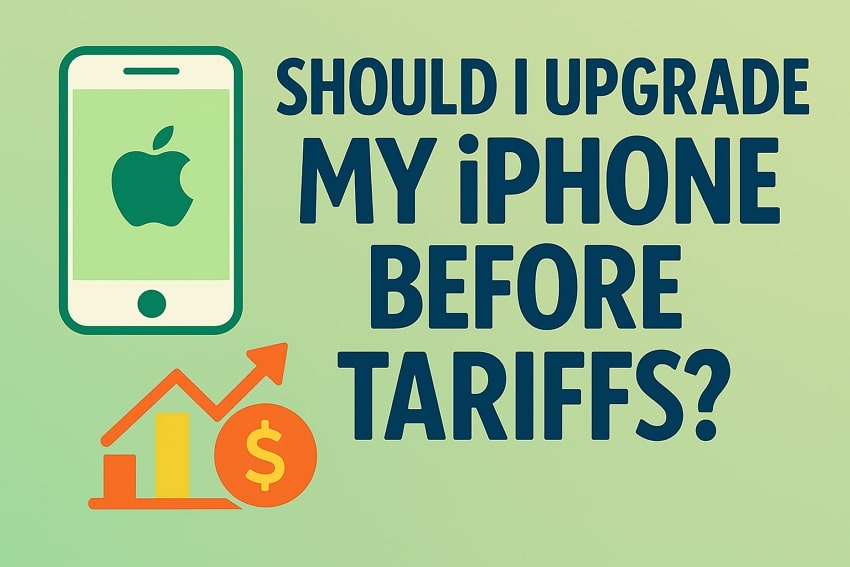
In this article
Part 1. Will iPhone Prices Increase Due to Tariffs?
The ultimate result of the increasing tariffs will eventually be an increase in the prices of upcoming iPhone models. As CBN News suggests, the price of the new flagship model, iPhone 16 Pro Max, could increase by 43% - 56%, and it may retail at $1,713 - $1,874. Nevertheless, these are just expectations if the company decides to offload its burden to its consumers instead of handling it itself.
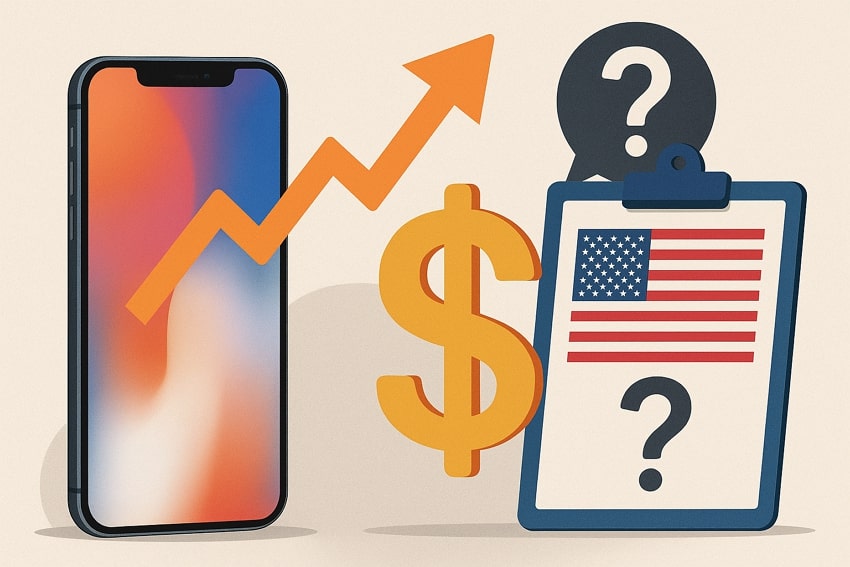
Similarly, the tariff impact on iPhone cost could be much higher if the company decides to manufacture its phones in the United States. CNN Business reports suggest that new phones could retail at $3500, which were previously sold for $1000. Hence, it is better to purchase your new phone as soon as you can. This approach could save you a lot of money and ensure access to the latest technology.
Comparison of Current and Predicted Prices for iPhone Models
To help you decide, we have gathered a comparison of the current and the expected prices of the iPhones after the tariffs hit. Therefore, go through the given comparison table to understand how much iPhones will cost after tariffs:
| iPhone Model | Current Price | Expected Price (At 43% Increase) |
|---|---|---|
| iPhone 16e | $599 | $850 |
| iPhone 16 | $799 | $1,140 |
| iPhone 16 Plus | $899 | $1,280 |
| iPhone 16 Pro | $999 | $1,400 |
| iPhone 16 Pro Max | $1,199 | $1,710 |
| iPhone 16 Pro Max (1TB) | $1,599 | $2,300 |
Part 2. Key Considerations Before Upgrading Your iPhone
Upon understanding how tariffs might affect phone prices, it's time to think about your current device. Asking, "Should I upgrade my iPhone before tariffs?" means considering more than just price. Before rushing to buy, take a closer look at these key factors:
Device Age and Performance
Before deciding to upgrade your phone, check how old it is and how well it works. Older iPhones like the XR, XS, and XS Max won’t get the new iOS 19, says 9to5Mac. Plus, models like the iPhone 5s, 6, and 6 Plus will stop working with apps like WhatsApp in May 2025.
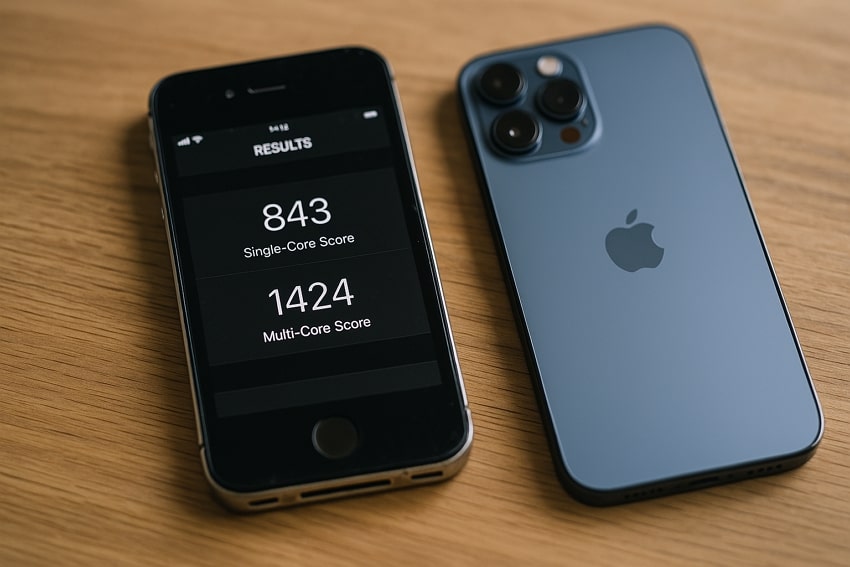
Along with that, performance issues are common in older iPhones. Devices like the iPhone 8 or earlier may experience slower response times and sluggishness. Moreover, Apple’s battery health tends to degrade over time. They are designed to hold up to 80% of their original capacity right after 500 complete charge cycles.
Apple Trade-In Program
Consumers can find a few ways that will allow them to handle the burden caused by tariffs. Apple Trade-In Program is one such method where the company buys your older phone for considerable credit. Users can get up to $600 by trading in a previous flagship model. While it may not be enough to balance the equation, the trade-in policy can reduce the tariff impact on iPhone costs.
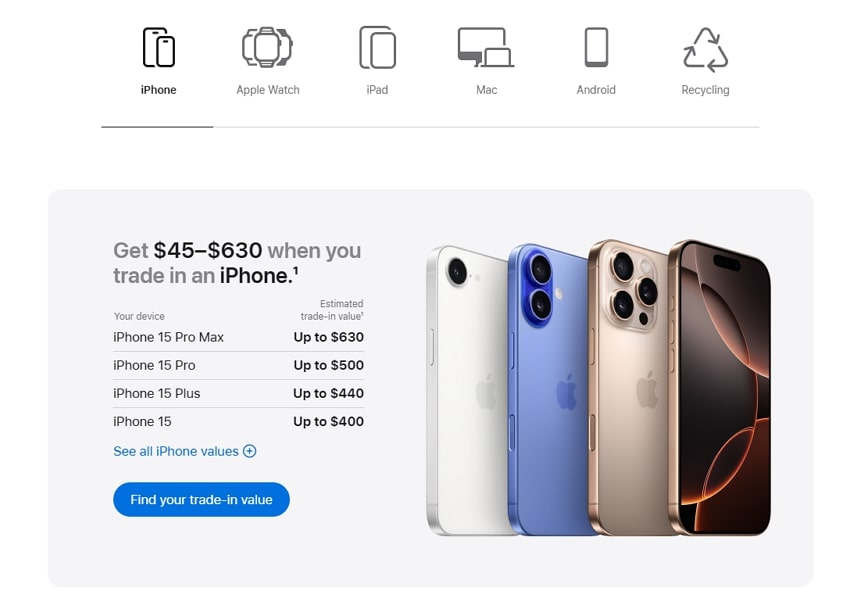
Even older models, like the iPhone 11 series, can help you save more than $150 when buying a new phone. Apart from phones, you can give in your watches and even Android devices to save big on your new purchase. An Android flagship can help you save more than $300 when you trade it in at an Apple store.
Other Ways to Offset the Cost
Apart from this program, consumers can find a few other options that will allow them to handle the tariff impact on iPhone costs. A few methods that can help you buy a new phone even after the tariffs hit are given below:
- Sell Older Devices: You can go to platforms like eBay to sell your used iPhones directly to buyers. In many cases, these platforms can give you better deals than the official Apple stores.
- Carrier Deals: Major carriers such as Verizon offer promotions where customers can trade in their old devices for discounts on new models. These deals can even exceed the value provided by the manufacturer's programs.
- Purchase Refurbished Devices: Users can go for used phones from reputable sellers to save money. Most of these devices are often tested and come with warranties to ensure reliability.
- Delay the Upgrade: Postponing the purchase of a new iPhone until market conditions stabilize may be a good idea. Even if the prices increase, delaying the upgrade will help you save more money.
- Switch to Android: Since Androids are often cheaper than Apple devices, you can consider buying them. You can find a variety of phones, and they usually offer reliable features at an affordable price point.
Part 3. Should You Upgrade Your iPhone Now?
Given how tariffs impact iPhone costs, upgrading before they are implemented could save you a lot of money. Experts predict that the price of iPhones might rise by as much as 56% due to tariffs on Chinese imports, which could add about $675 to the cost of devices like the iPhone 16 Pro Max. Upgrading now could be a smart decision if your current phone no longer works well or isn't supported anymore.

As we know, each new iPhone model offers substantial improvements, including better cameras and advanced features. The iPhone 16 Pro Max features a 48MP Fusion Camera that can capture 4K video at 120 FPS, plus Ultra-Wide and 5x Telephoto lenses. For a great balance of performance and affordability, the standard iPhone 15 is available starting at $799.
Otherwise, the iPhone SE (2024) provides a compact design with modern internals at a more accessible price point. Acting before tariffs lead to price increases is an important step to protect your savings. However, delaying your purchase can result in paying significantly more for the same device.
Part 4. What’s Next for iPhone Upgrade?
Building upon our earlier discussion on upgrading your phone, it's important to consider what's next in iPhone upgrades. Apple has already introduced the iPhone 16 lineup, including the standard iPhone 16, 16 Plus, 16 Pro, and 16 Pro Max. Plus, the iPhone 16e offers a more affordable option with features like the A18 chip and a 2-in-1 camera system.
When you make up your mind to upgrade a phone, transferring your old phone data to a new one is also as important as buying it before the tariffs. Efficient data migration preserves your contacts, photos, apps, and settings, maintaining your personalized experience. Thus, the following section explored the best ways after exploring "Should I upgrade my iPhone before tariffs?”
Transfer Data with Move to iOS
When moving from Android to iOS, this app is a recommended solution to migrate your data. It is specifically designed by Apple to help users move to its ecosystem. Its features make it easy to transfer all types of important data to the new phone without any compatibility issues. Before the tariff impacts on iPhone cost, use this app to move your data to your new phone quickly:


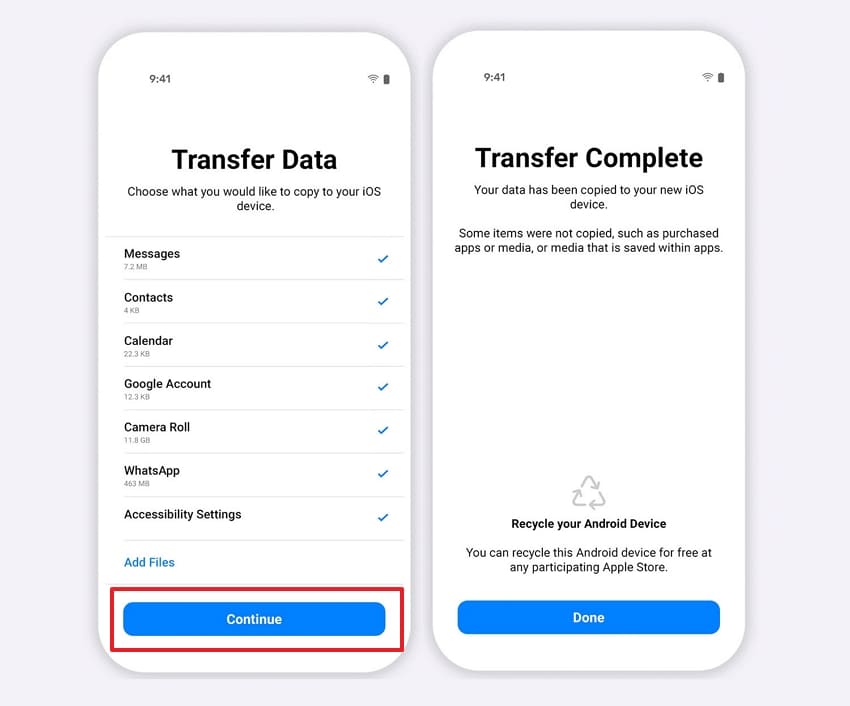
Transfer Data with the MobileTrans App
Apart from knowing “Should I upgrade my iPhone before tariffs?”, the MobileTrans App stands out as the best and most reliable option for migrating your data. Many users of this app loved it, and one said on Trustpilot that MobileTrans is the easiest way to move your phone data. Plus, it ensures that even those with limited technical expertise can navigate the transfer process with ease.
MobileTrans supports the transfer of over 18 types of data, including contacts, multimedia files, and more. Beyond standard data, it even specializes in transferring WhatsApp messages and media between devices. It even achieves transfer speeds up to 30 MB/s, allowing a 1GB video to transfer in just 30 seconds. This rapid speed ensures minimal downtime during your device transition.
Comprehensive Guide to Transfer Data with the MobileTrans App
Upon knowing its advanced features, let’s dive below to explore how to use this app to move your old phone’s data to your new one:
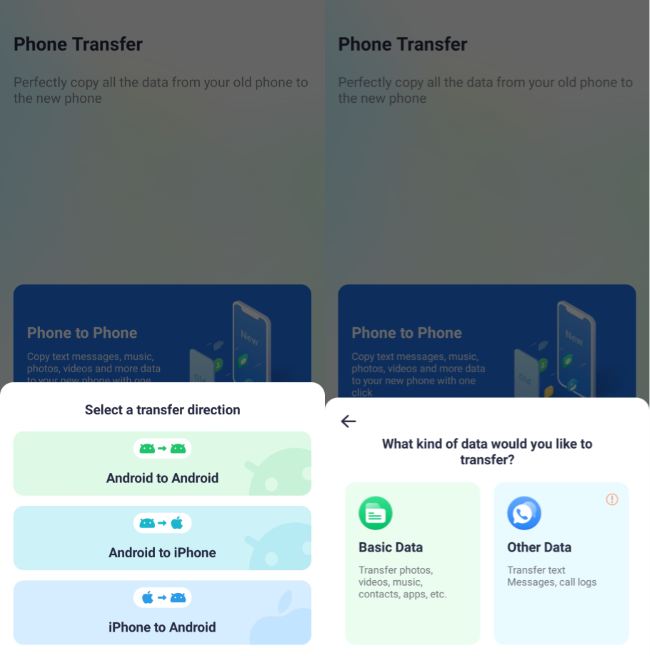
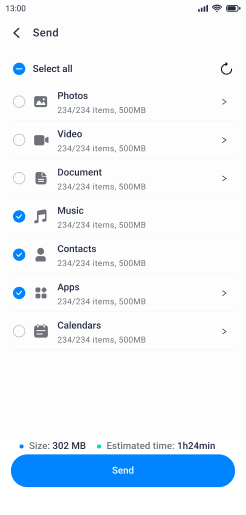

Other Tips About Setting Up iPhone
While migrating your data is important, there are a few other things you should consider during the device setup process. The tips given will help you in this process and balance the tariff impact on iPhone cost:
- Check iCloud Backup: You should not rush to download all your apps right away. First, check if your iCloud has a backup of your old phone that may include your data and applications.
- Transfer SIM Early: Make sure your eSIM is activated before finishing the setup of your phone. Most carriers allow you to scan a QR code or transfer your number from your old phone.
- Enable Find My iPhone: This is the first security feature you should turn on. It helps you track your phone if it gets lost or stolen and also stops others from using it.
- Customize Control Center: Users can reach this menu by swiping down from the top right corner. Afterward, they should customize it to add shortcuts of their choice.
- Disable Unwanted Settings: After setup, go to Settings and turn off options like “Share iPhone Analytics.” Also, turn off background app refresh to reduce data use and protect your privacy
Conclusion
To conclude, deciding whether “Should I upgrade my iPhone before tariffs?” depends on various factors, including price hikes and device performance. Upgrading now can save you money and ensure you get the latest tech before prices rise.
When transitioning to a new device, efficient data transfer is key. For a smooth transfer, we highly recommend using the MobileTrans App. It offers secure and fast data migration, ensuring minimal downtime during the process.

